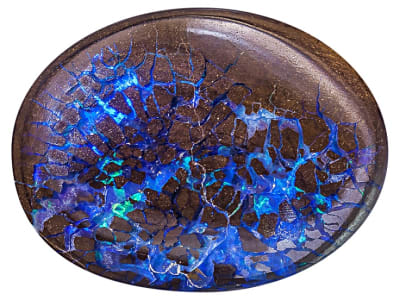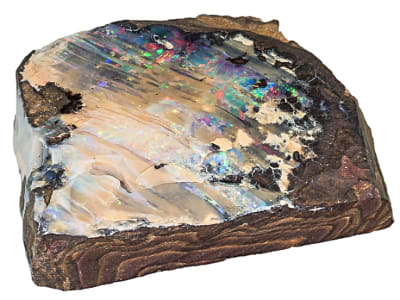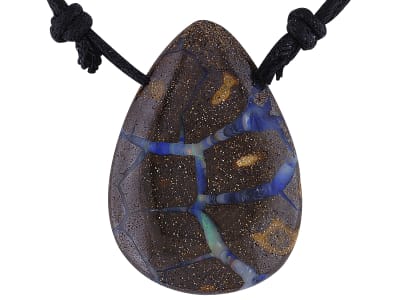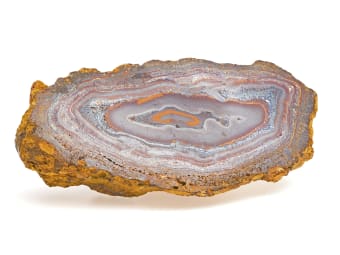Opal was first discovered in Australia in 1872. Boulder opal is precious opal that forms in ironstone matrix, in Winton, Queensland or quartzite matrix, in Andamooka, South Australia, both locations within the Great Artesian Basin of Australia. In Winton, the opal is deposited in small veins or voids within the ironstone and is known as boulder matrix opal. If the opal forms in a banded pattern or central core the size of a walnut, it is called a Yowah nut. The boulder opal from Andamooka, is sometimes called “painted lady”. Boulder opal matrix may be brown, gray, orange or white. If the matrix is dark, the stones are known as “boulder blacks”. Opal play of color is caused by light diffraction induced by organized silica spheres within the precious opal. Boulder opal locations within the Great Artesian Basin include, Andamooka, Carbine, Jundah, Koroit, Kynuna, Mayneside, Opalton, Quilpie, Toompine and Yowah. Quilpie, Yowah and Winton are the major mining and wholesale locations with Quilpie being the largest producer. Boulder opal has also been reported from Brazil and Canada.
General Information
LWUV: Inert
Boulder Opal Colors
-
 Brown
Brown -
 Multi-color
Multi-color
Alternate Names
Precious Opal, Natural Opal Type 2, Yowah Opal
Countries of Origin
Canada; Unknown; Brazil; Mexico; Australia
History
George Cragg discovered boulder opal in 1888 and established the Cragg mine in the Winton district. Due to a drought and harsh conditions most opal mining in the area ceased until the 1960’s when the use of heavy machinery was introduced. flooding in the Queensland area since the end of the last century has limited mining in the area. The opal is found by gamma-ray logging, ground penetrating radar, magnetic surveying, and scouting certain tree species.
In 1970 Andamooka black opal matrix was discovered at the 17 Mile Field in Coober Pedy. Mining for boulder opal hit its peak in the 1980’s but in 2018 it was reported that fewer than 30 individuals were mining boulder opal.
Care
Normal gentle care. If the material is oiled or stabilized then please avoid heat, chemicals, ultrasonic, and repolishing.
More About Boulder Opal
Opals have been reported back to 200 B.C.. Arab folklore relates the story that opals fell from heaven in flashes of lightning. In Oriental lore opals are the stone of hope and the ancient Greeks believed that it bestowed its owners with the gift of prophecy.
Species/Variety
Yowah Nut
Yowah Nut is a variety of Boulder Opal that derives its name from a locality in the Australian Outback. The nodules are about walnut size and will have colorful veins running throughout.




